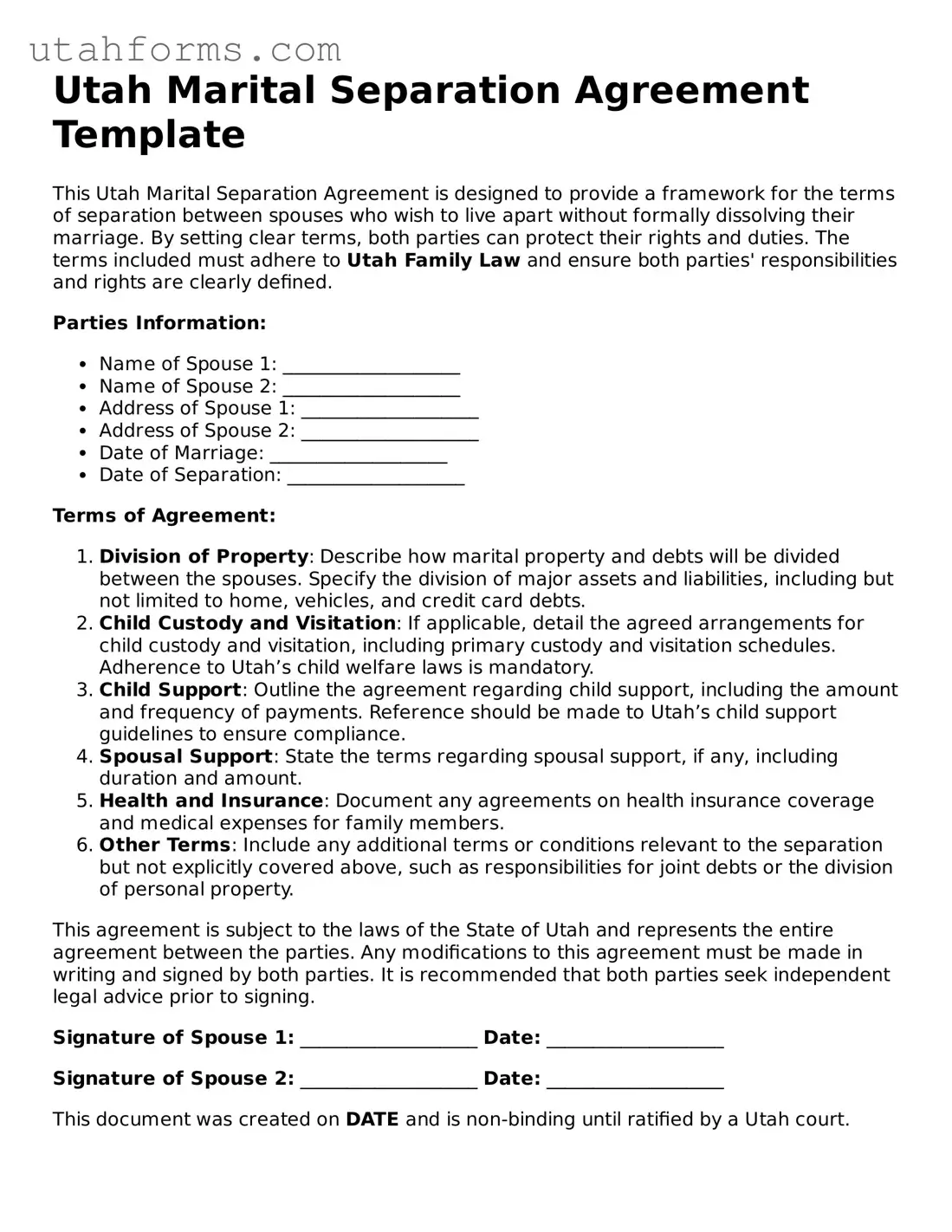The Utah Marital Separation Agreement form shares similarities with the Prenuptial Agreement, which is created before marriage to outline the distribution of assets and debts in the event of a divorce. Both documents serve to establish clear financial boundaries and responsibilities, ensuring that both parties have a mutual understanding of their financial dissolution, should the marriage not last. The key difference lies in their timing, with prenuptial agreements being prepared prior to marriage, while marital separation agreements are formulated at the onset of separation.
Comparable to the Marital Separation Agreement is the Postnuptial Agreement, designed after a couple gets married to agree on the division of assets and liabilities if the marriage comes to an end. Like the marital separation agreement, it aims to provide clarity and agreement on financial issues and responsibilities, yet it is done without an imminent separation in mind. Both documents function to safeguard individual financial interests, but the postnuptial agreement does so without the current intention to part ways.
The Divorce Settlement Agreement closely resembles the Utah Marital Separation Agreement in that both establish terms for dividing assets, alimony, child support, and custody arrangements during a divorce. However, the Divorce Settlement Agreement is typically the final agreement, incorporated into the final divorce decree, whereas the marital separation agreement may serve as a preliminary measure before filing for divorce, outlining similar terms.
Similarly, a Child Custody Agreement, which determines the custody arrangements, visitation schedules, and child support obligations, shares purposes with the Marital Separation Agreement when it includes provisions for children. Though the latter encompasses a broader range of marital dissolution issues, both agreements prioritize the well-being and support of children involved in the separation or divorce.
Another document akin to the Marital Separation Agreement is the Property Settlement Agreement, specifically focusing on distributing marital assets and liabilities. While the marital separation agreement covers this aspect alongside others like alimony and child custody, the Property Settlement Agreement strictly deals with the financial separation of property, making it a more focused counterpart.
The Alimony Agreement, which specifies the terms of spousal support payments from one ex-spouse to another, parallels the financial provisions outlined in the Marital Separation Agreement. Though the latter might cover a more comprehensive range of issues related to marital dissolution, both agreements aim to ensure a financial safety net for the lesser-earning spouse post-separation.
Equivalent in purpose to laying the groundwork for parental responsibilities post-separation, the Parenting Plan is another document with similarities to the children-related aspects of the Marital Separation Agreement. It outlines in detail how parents will share custody, make decisions for the child, and handle visitation. Both documents share the goal of protecting the interests and welfare of the children involved following the parents' separation.
The Legal Separation Agreement, which is recognized by some states, formalizes the division of assets, debt responsibilities, and, if applicable, child custody arrangements without the finality of divorce. It is remarkably similar to the Utah Marital Separation Agreement, often mirroring its objectives and content. The primary distinction is the legal standing that varies by state, with some jurisdictions not recognizing separation agreements without proceeding to divorce.
